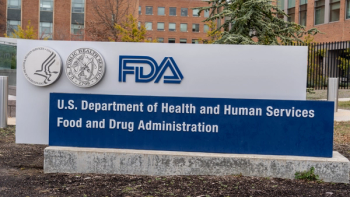
Food and Pharma: The Broadening Reach of Regulators
The lines between the pharma and food industries are blurring, presenting a great opportunity for life sciences firms to diversify - as long as they understand the regulatory differences, writes Peter Muller.
The lines between the pharma and food industries are blurring, presenting a great opportunity for life sciences firms to diversify - as long as they realise that other manufacturers they acquire or partner with are unlikely to have the same regulatory controls in place, writes Peter Muller.
Labeling on food is becoming as important as that for pharmaceutical products - a situation that will increase as regulators challenge manufacturers’ claims and force them to be more transparent. This has implications for life sciences firms that have identified new business opportunities in ‘wellness’ as a complementary revenue stream.
Regulators’ growing interest in food and ‘nutraceuticals’ (also known as ‘functional foods’ - ie. those with added health benefits) reflects growing government interest in helping consumers to make better dietary choices. For packaged food now, companies need to be more consistent, emphatic and transparent about what’s in their products and how this relates to current health advice. In nutraceuticals, the expectation is that companies should not make unsubstantiated claims, and that they provide adequate warnings around portions and doses of active ingredients.
The pharma industry wants its share of these adjacent market opportunities, not least as a means of reducing its reliance on expensive blockbuster drugs. When the industry talks about the need for transformation, much of this is to do with adapting to the new thrust in healthcare towards prevention over cure. This is a significant shift in strategy for life sciences, whose entire business model up to now has been based on addressing ill health. Transparency Market Research
But whether they expand into adjacent markets organically, or through partnership or acquisition, life sciences organisations need to be prepared for a relative lack of maturity in the discipline of regulatory compliance – a situation that will be challenged as national and international authorities expand their controls over food claims and information.
Regulators’ growing appetite for food controls
Accurate labeling will be a big area. On May 20, the FDA in the US issued new guidance on food labeling
Its new Nutrition Facts label guidance, which applies to packaged foods, will ensure that labelling reflects the latest scientific information, including the link between diet and chronic diseases, for example. New requirements also include updated serving sizes, and a refreshed design which highlights information such as calorie content, portion size, added sugar content. New nutrients must be declared too, including Vitamin D and potassium, to combat associated deficiencies.
Most manufacturers will have until July 26, 2018 to comply with the final requirements; smaller players will have an additional year to make the changes.
Food labeling changes in Europe are further ahead. New requirements issued in 2014 will need to be met from December this year
Health Canada has issued its own proposed guidance which is now with the industry for comment
No one wants to get caught out by the new requirements. Food recalls are an almost everyday occurrence. Just recently, The Nut House in the UK was forced to recall cakes containing whey powder, because this wasn’t mentioned on the label. Another labelling error saw Lidl UK recall an Italian chicken product, while rival Aldi had to withdraw a range of yoghurts because the labels failed to mention hazelnut among the ingredients.
Nutraceuticals trigger additional need for vigilance
In the soaring nutraceuticals market, rules are becoming stricter too. In addition to meeting emerging standards on what is presented, and how, companies will need to watch that they aren’t making claims they can’t substantiate about a product’s secondary benefits. Authorities in Scandinavia have been quite clear that if nutrition companies are going to start making medicinal claims about their products, they must categorise themselves as pharmaceutical businesses and be bound by similar requirements.
Japan, where functional foods first took hold, probably has the most evolved approach to associated labeling
In other markets, parameters are still being set. In the EU, products that claim to be a ‘nutraceutical’ must be certified by the European Food Standards Authority. In the US, products don’t (yet) have to pass stringent government tests as long as they are not claiming to treat or prevent a specific disease
Health Canada too
Preparation is everything
All of this means that organizations with an interest in health foods and nutraceuticals must start putting in place processes and systems to handle all of the new requirements, to avoid costly mistakes being made on product labels and packaging. They will need skills, processes and systems that span the whole production chain, and which they can show to auditors.
Without automation, ensuring accurate, complete and up-to-date labeling is a full-time job. One approach that has found appeal in life sciences is to accelerate initial rounds of label checks, using sophisticated text verification – a process which can very quickly pick up even the tiniest discrepancies between regulatory text, artwork briefs and packaging artwork. This can save on several rounds of laborious proofreading, freeing up skilled resources for more specialist work and maintaining momentum as products are prepared for distribution.
It is no coincidence that the food industry is now beginning to look to pharma for guidance on best practices. The pharma industry has 20-30 years’ experience of managing complex control processes of the kind needed now in adjacent markets, so provides a valuable reference point.
The labor-saving techniques it has embraced should now be considered by adjacent sectors, as organizations there too prepare to meet growing regulatory demands without taking resources away from their commercial priorities.
Peter Muller (
References
Newsletter
Lead with insight with the Pharmaceutical Executive newsletter, featuring strategic analysis, leadership trends, and market intelligence for biopharma decision-makers.




